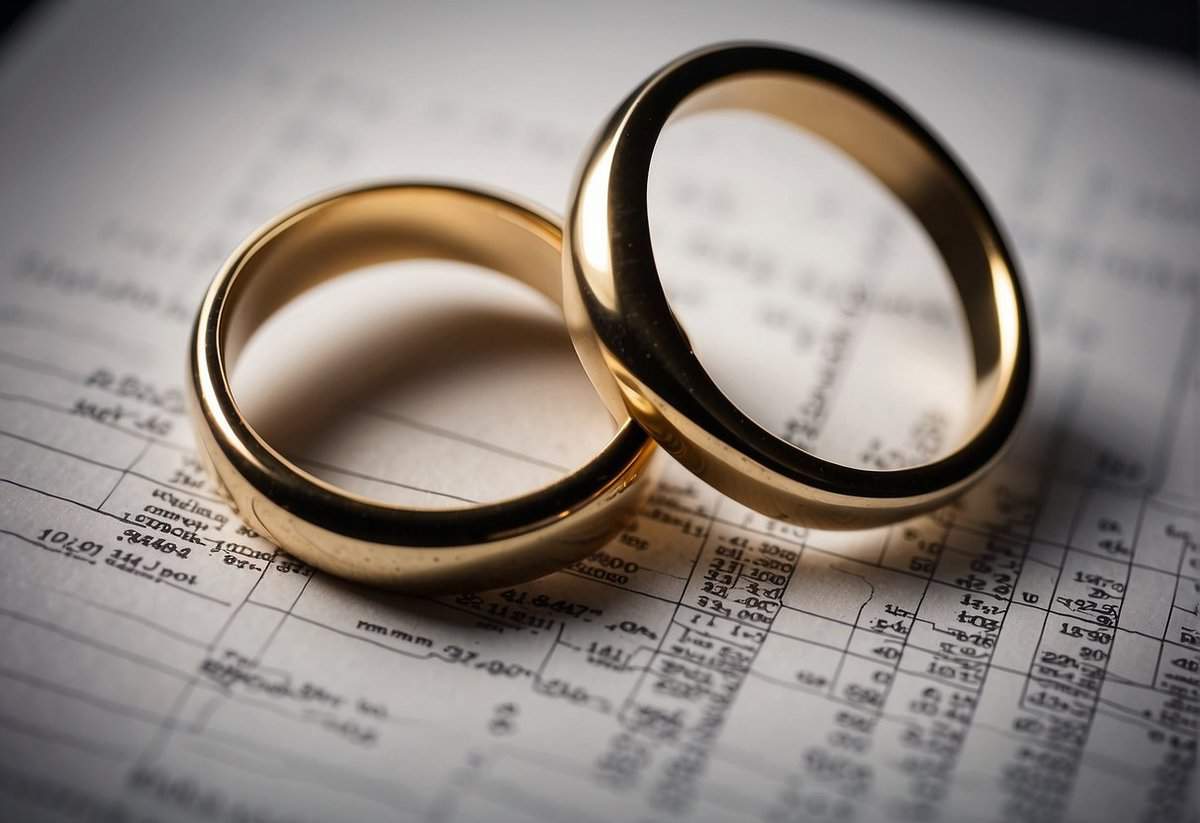Is Marriage Declining in the UK? Understanding Modern Relationship Trends
Over recent years, you may have noticed conversations around the concept of marriage and its role in modern society taking a significant turn. In particular, the United Kingdom has seen a notable change in its matrimonial landscape. With increasing discussions and reports pointing towards a decline, analyzing the state of marriage within the UK has become a matter of much interest and consideration. Changes in societal norms and individual priorities are influencing how people perceive the institution of marriage, prompting many to question its current relevance and future trajectory.

What once was a cornerstone of adult life appears to be undergoing a transformation, particularly in England and Wales. There has been a steady decrease in marriage rates, accompanied by an uptick in average age at marriage and alternative forms of partnership gaining prevalence. This shift is not merely about numbers but suggests deeper socio-cultural evolutions. Understanding the reasons behind this decline as well as its implications is key to comprehending the broader changes within UK society.
Key Takeaways
- Marriage rates in the UK have declined, suggesting a change in societal values and personal choices.
- England and Wales, in particular, have seen a shift in marital trends, including later marriages.
- Understanding these patterns poses questions about the future societal and cultural impact.
Historical Trends in Marriage Rates

The landscape of matrimony in the UK has been redefined over time, reflecting societal shifts and legal reforms. You’ll see changes in who’s marrying whom and at what stage of life, as well as how they’re choosing to tie the knot.
Marriage Rates Over the Decades
Since the late 20th century, you’ve witnessed a steady decline in the marriage rates in England and Wales. Data from the Office for National Statistics shows that in 2020, marriage rates fell to their lowest level since 1862. The decline is not just about numbers but also reflects the changes in your society’s attitudes towards marriage. For instance, the proportion of your adult population that remains unmarried has increased, and many are opting for long-term partnerships without the formal label.
In earlier decades, data indicates that marriages were more prevalent. In 2019, for example, there were 219,850 marriages in England and Wales combined. Those numbers were already on the decrease, falling by 6.4% from the previous year. The trend suggests that as your lives become busier and more complex, the traditional institution of marriage is becoming less of a default option for couples.
Impact of Legal Reforms on Marriages
Legal changes have also played their part in shaping marriage rates. The introduction of civil partnerships in 2005 offered same-sex couples similar legal rights to marriage without the title. It wasn’t until 2014 that same-sex marriage was legalized in England and Wales, which has resulted in a gradual increase in the number of same-sex couples marrying. However, this increase has not been enough to offset the overall decline in marriage rates.
Marriages between opposite-sex couples have seen a particularly notable decline. Your changing attitudes toward cohabitation without marriage, the increase in the age at marriage, and the consideration of divorce rates may be influencing your decisions. In addition, there’s been a shift from religious ceremonies to civil marriages, as indicated by the statistics. Each of these factors, influenced by legal reforms, tells a story about the evolving nature of unions within your population.
Factors Influencing Marriage Decline

You might be wondering why fewer couples in the UK are tying the knot. Various economic and social factors, shifts in public attitudes towards cohabitation, and changes in family structures all play a part in this societal shift.
Economic and Social Factors
Economic pressures can heavily influence your decision to marry. For instance, the cost of weddings and the expenses associated with starting and maintaining a family might seem daunting. Your financial stability can affect your readiness for marriage, and with increasing living costs, many in younger age groups are prioritizing their careers over marital commitment. Additionally, societal expectations about marriage and family have evolved, leading some to question traditional institutions in favor of personal freedom.
Shifts in Public Attitudes Towards Cohabitation
Your views on living together without marriage might be more relaxed than previous generations. Cohabitation is no longer seen as taboo but rather a common step in relationships. This trend towards cohabitation over formal marriage suggests a shift in the value placed on the social institution of marriage itself. Couples may be more focused on the quality and commitment of their relationship, rather than a formal nuptial agreement.
Changes in Family Structures
Families in the UK have transformed, and so have the roles within them. Your family model may differ significantly from the traditional nuclear family. There’s an increase in single-parent families, blended families, and families headed by same-sex couples; marriage is no longer the only framework for establishing a family. The presence of children may not necessitate marriage like it once did, and differing ethnic backgrounds bring diverse cultural views on marriage, further influencing these trends.
Comparative Analysis

When you’re looking at marriage trends, it’s interesting to compare what’s happening in the UK with other countries and see how divorce patterns may differ among various regions.
Marriage Decline in the UK vs. Other Countries
In the UK, particularly focusing on marriages in England and Wales, there’s been a noticeable downturn. Comparisons show that this is not a unique situation; countries like the US and Japan are also witnessing similar trends. For instance, reports note that while marriage rates have been decreasing since 2016, with a particularly large drop in 2020 due to pandemic restrictions, this forms part of a longer-term decline. The UK census data reinforces this trend, showing a steady decrease in the married population over recent generations.
- US: Marriage rates have also declined over the decades, though certain states may show variations.
- Japan: Trends indicate a significant decline in marriages, influenced by cultural and economic factors among younger generations.
Marriages in England and Wales have observed a significant decrease in numbers reflecting broader changes in social norms across the globe.
Divorce Trends Across Different Regions
The patterns of divorce serve as another lens through which to view marital trends. While the UK has experienced a fluctuation in divorce rates, often influenced by legal changes or societal pressures, the narrative varies in other parts of the world. In the US, for instance, there’s been a narrative of high divorce rates although recent years have seen a slight decrease. It’s important for you to recognize the influence of regional laws and cultural attitudes that shape these trends.
- Britain: Shows a complex pattern with some studies suggesting an increase in divorce and others indicating stability or decline.
- US: Certain regions of the US continue to have relatively high divorce rates, but overall trends have been showing a decrease.
In analyzing divorce trends across different regions, it becomes clear that while the UK’s marriage and divorce rates have their specificities, they mirror a global shift in marital practices.
Socio-Cultural Impact of Marriage Decline

As you observe the changing landscape of relationships in the UK, it’s interesting to see how the decline in marriage rates is reshaping social structures and the experience of growing up. Let’s explore how these shifts are influencing kinship and social ties, as well as the evolution of parenting and childhood.
Influence on Kinship and Social Ties
In societies where marriage was traditionally the bedrock of social ties, a shift towards more people—young adults in particular—choosing to cohabit or stay single has noticeable effects. Cohabiting couples may form bonds similar to those of married couples, but their legal and social recognition often differs, impacting shared experiences and mutual support systems.
For many unmarried men and women, personal networks can become as significant as traditional family units. It’s not uncommon for friend groups to become akin to family—a phenomenon that’s less tied to religion or cultural expectations. Within Jewish communities, as well as other religious groups, a decline in marriage can alter the intergenerational fabric, sometimes necessitating new ways to perpetuate cultural and religious identity.
Effects on Parenting and Childhood
The traditional ideal of a “nuclear family” is shifting, as more adults are raising children in unmarried partnerships or as single parents. Parenthood outside of marriage is becoming normalized, influencing children’s upbringing by introducing a wider array of family structures.
Single people taking on parenting roles can also change the perception of what constitutes a “typical” family. For some, this is empowering, and for others, it presents unique challenges. As for kids, they may grow up with a broader understanding of kinship, seeing no single month as the popular month for weddings but rather a variety of ways in which adults commit to caring for one another and raising children together.
Frequently Asked Questions

In this section, you’ll find answers to common questions about the recent trends in marriage within the UK, including the reasons behind the changes and current data on marriage rates.
Why are fewer people choosing to get married in recent years?
Marriage rates have seen a notable decline because societal norms have evolved, and there’s a growing acceptance of cohabitation without formal marriage. In 2020, there was a decrease of 61% in marriages in England and Wales, a trend influenced by the pandemic but also reflective of broader changes over time.
What factors contribute to the decline of marriage rates?
Economic factors, shifts in personal values, and a preference for less formal commitment arrangements are contributing to the decline. Additionally, the desire for greater personal autonomy and career prioritization are factors that reduce marriage rates.
At what age are most people getting married in the UK today?
The trend is toward later marriages, with many individuals choosing to get married further into their adult years compared to previous generations. This reflects changes in lifestyle and priorities, including the emphasis on education and career.
What is the trend in same-sex marriage statistics in the UK?
Same-sex marriage has been legal in the UK since 2014, and there’s been a steady number of such marriages since legalization. However, like heterosexual marriages, same-sex marriage rates are influenced by similar societal trends.
How does the UK divorce rate compare with the marriage rate?
Divorce rates in the UK have fluctuated over the years, but in recent times, they show a trend of decline, similar to marriage rates. This could be due to the reduced number of marriages overall or a change in the stability of relationships.
What are the sociological reasons behind the change in marriage trends?
Changing gender roles, the increased participation of women in higher education and the workforce, and the decreased societal pressure to marry are all sociological factors impacting marriage trends. The individualistic culture that prioritizes personal fulfillment over traditional institutions may also play a role.


